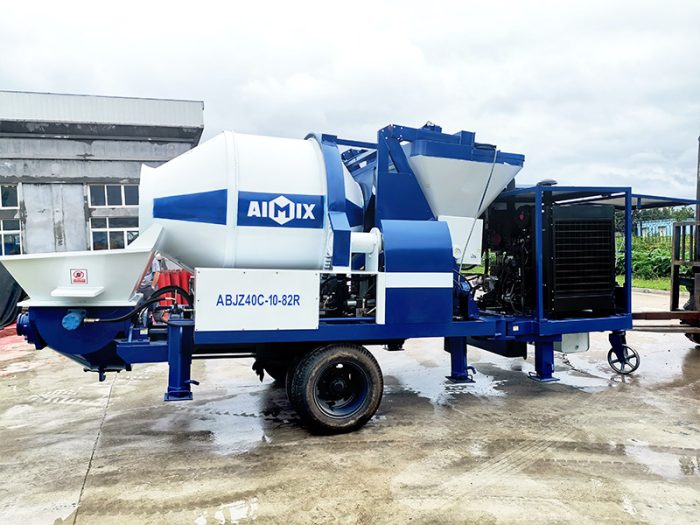When you need to move large concrete quantities quickly and easily, a concrete mixer pump is your best option. Available in electric or gasoline-powered models, mixer pumps can be used for many large and small applications. This guide will provide an overview of the basics of mixer pumps so you can determine if one is right for your needs.
How Does a Concrete Mixer Pump Work?
Concrete mixer pumps(bomba de mezcladora de hormigón) work by using a hydraulic piston to create pressure and force the concrete mixture through the pump’s hose and out the nozzle. The faster you move the piston, the more fluid is forced through the hose. This allows for quick, easy movement of large quantities of concrete.

How Do You Use a Concrete Mixer Pump?
The first thing you need to do is attach the suction hose of your pump to where the fluid will be coming from. This could include a wheelbarrow, a skid loader bucket, or even another mixer pump. Next, connect the discharge hose and nozzle(s) to the area where you want the concrete to go. Finally, start the pump and begin moving the piston.
Be sure to take into account how much pressure your pump(bomba de concreto de remolque) is putting out when selecting a nozzle size. Too large of a nozzle will result in too much fluid being released, while too small of a nozzle will not produce enough force and will require more work on your part.
What Are the Different Types of Concrete Mixer Pumps?
There are two types of concrete mixer pumps: self-priming and non-self priming. Self-priming models do not need a pump pit to operate, while non-self-priming models will have an additional hose that needs to be connected to a pump pit for the machine to function.
There are also two types of mixer pumps based on their power source: electric and gasoline. Electric mixer pumps are powered by an electrical outlet, while gasoline models use petrol visit: https://aimixgrupo.com.mx/bomba-mezcladora-de-concreto/.
What Are the Advantages of Using a Concrete Mixer Pump?
The most significant advantage of using a concrete mixer pump is time savings. Pouring and moving large quantities of concrete can be very labor-intensive, as you will need to mix the cement in batches before pouring it. A mixer pump eliminates this step by allowing for continuous movement and placement of fluid concrete – saving you both time and effort! Additionally, mixer pumps are able to produce accurate quantities of concrete without the risk of segregation or layering that can happen when moving and pouring by hand.
What Are Some Common Uses of Concrete Mixer Pumps?
Concrete mixer pumps are most commonly used in large construction projects, but can also be very useful for smaller jobs. Some common uses include cementing a foundation, pouring a slab or driveway, and even creating retaining walls.
When selecting the right concrete mixer pump for your needs, it is vital to consider the type of project you will be using it for and the size and power of the machine. Be sure to consult with a sales representative of AIMIX(representante de ventas de AIMIX) if you have any questions – they will be able to help you find the perfect concrete mixer pump for your next project!
